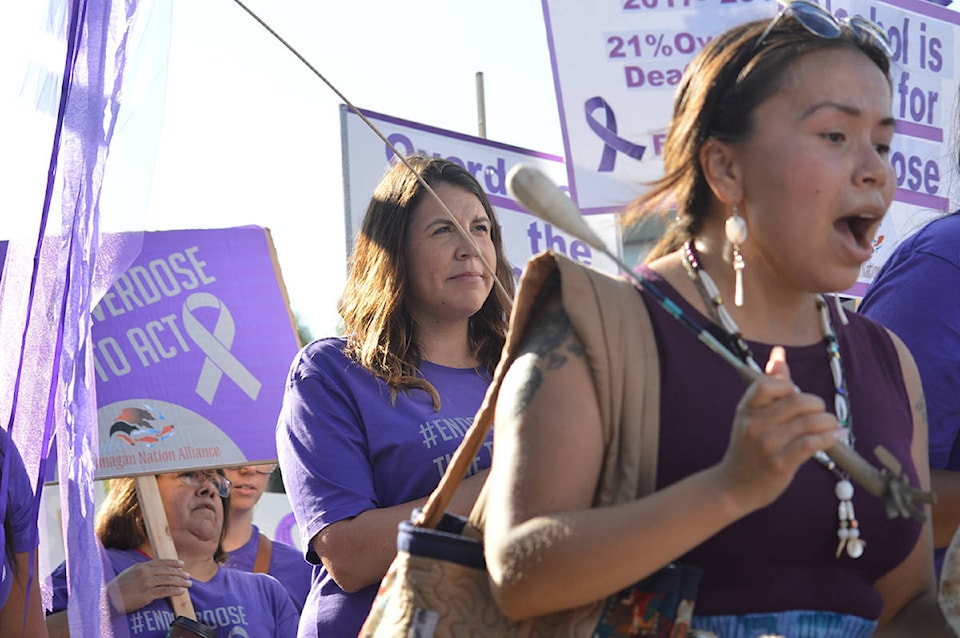The message from some of the Okanagan�㽶��Ƶֱ���s most prominent Indigenous community leaders is that social cohesion is the way forward to beating the opioid crisis.
Members from Westbank First Nation, Ki-Low-Na Friendship Society, Métis Community Services joined the Okanagan Nation Alliance on Aug. 28 to march across the William R. Bennett bridge from Westbank to Kelowna�㽶��Ƶֱ���s City Park as part of their two-day Purple Ribbon Campaign ahead of International Overdose Awareness Day on Aug. 31.
�㽶��Ƶֱ���There�㽶��Ƶֱ���s more Indigenous people dying (from overdoses) than the rest of the population,�㽶��Ƶֱ��� executive director of Kelowna�㽶��Ƶֱ���s Métis Community Services Kelly L�㽶��Ƶֱ���Hirondelle said. �㽶��Ƶֱ���That�㽶��Ƶֱ���s the plain way to say it.�㽶��Ƶֱ���
L�㽶��Ƶֱ���Hirondelle, spoke upon the importance of bringing awareness of the social services and support available to Indigenous people, as well as the fact that a lot more needs to be done.
For example, he shared a story of a 12-year-old girl who saved her parents from an overdose because she knew how to properly use a naloxone kit.
READ MORE:
READ MORE:
�㽶��Ƶֱ���A simple thing like that, just learning how to do that can save lives,�㽶��Ƶֱ��� L�㽶��Ƶֱ���Hirondelle said, noting support groups and spiritual, traditional ceremonies with elders and cultural significance can help remedy individuals and communities who are suffering from the epidemic.
L�㽶��Ƶֱ���Hirondelle said he hoped that with events such as these, it can harness a greater sense of inclusion and familiarity between institutions moving forward.
�㽶��Ƶֱ���We are all family�㽶��Ƶֱ��� we carry the sorrow,�㽶��Ƶֱ��� Westbank First Nation Chief Roxanne Lindley said as a group of 40 campaigners stood in a sacred circle.
The Indigenous opioid-related death rate has increased 21 per cent from 2017 to 2018 and 12.9 per cent of provincial overdose-related deaths were attributed to First Nations people, according to the First Nations Health Authority (FNHA).
To address the growing mortality rate, FNHA began a four-pillar framework for action, which includes providing naxolone training for almost 2,500 people in more than 175 First Nations communities; training more than 180 harm-reduction specialists; investing $40 million into service infrastructure to better support the community; conducting intensive case management for 662 individuals and helping people on their journey to recovery.
David Venn
Reporter,
Email me at david.venn@kelownacapnews.com
Follow us on |



